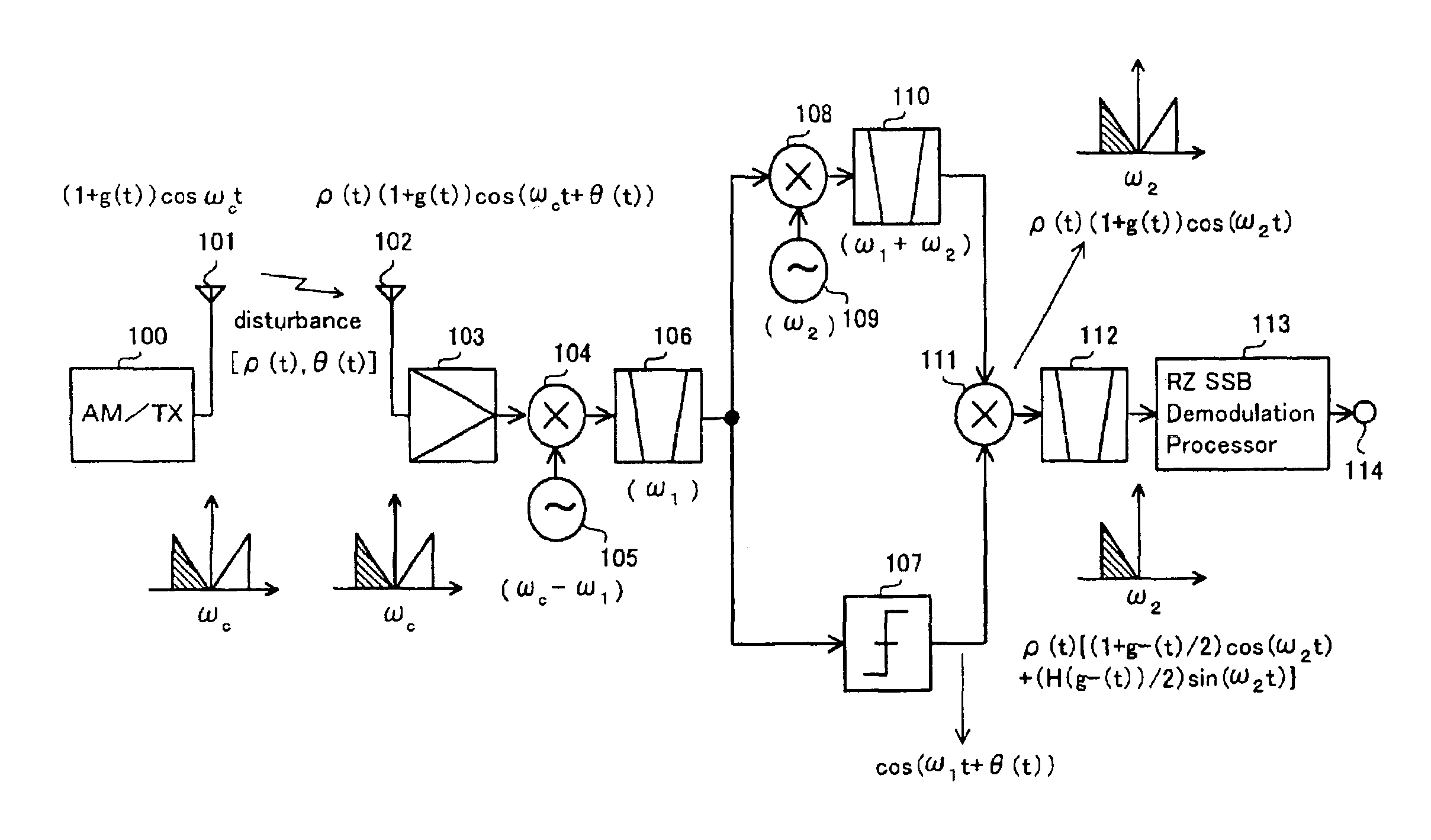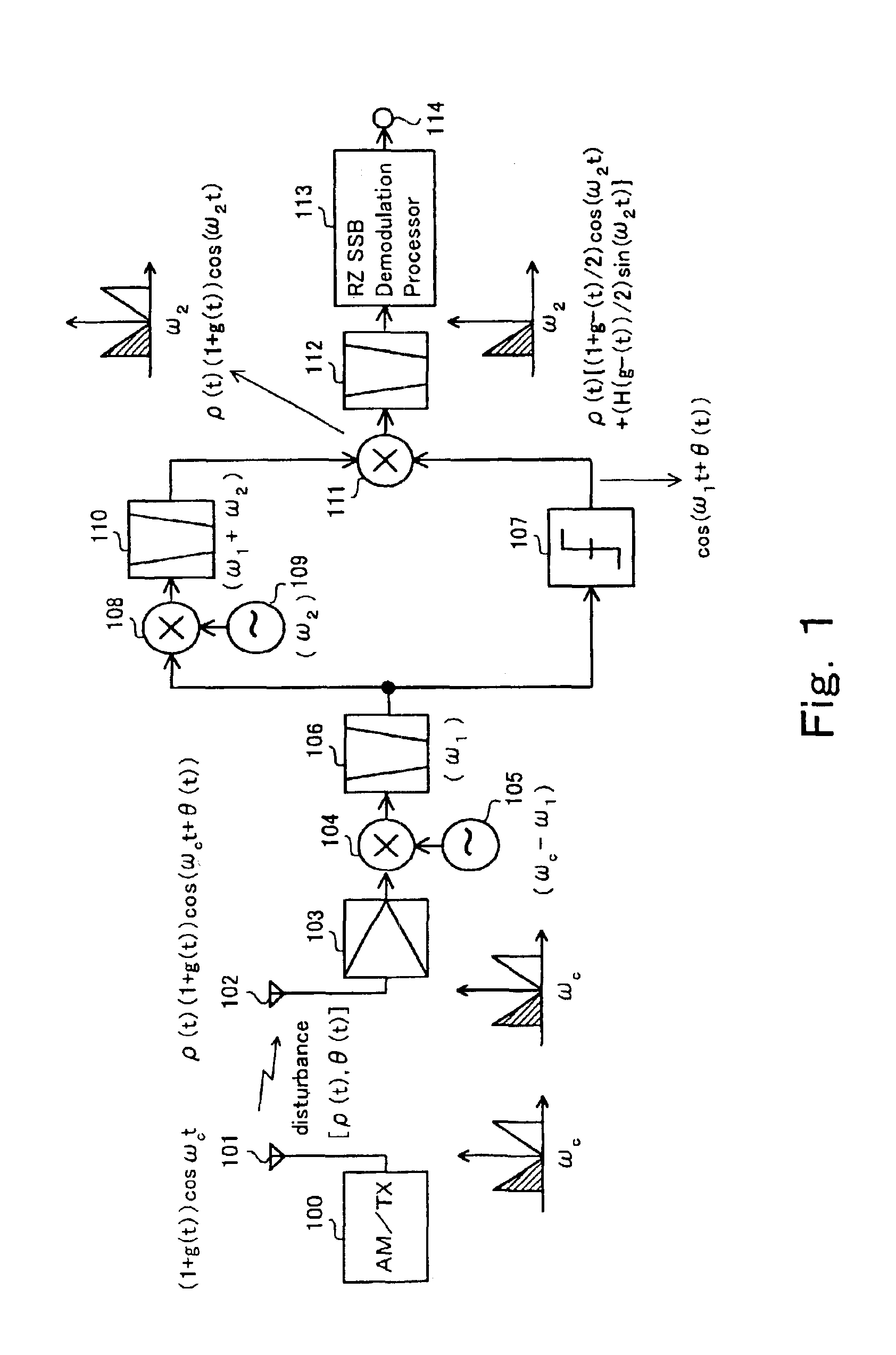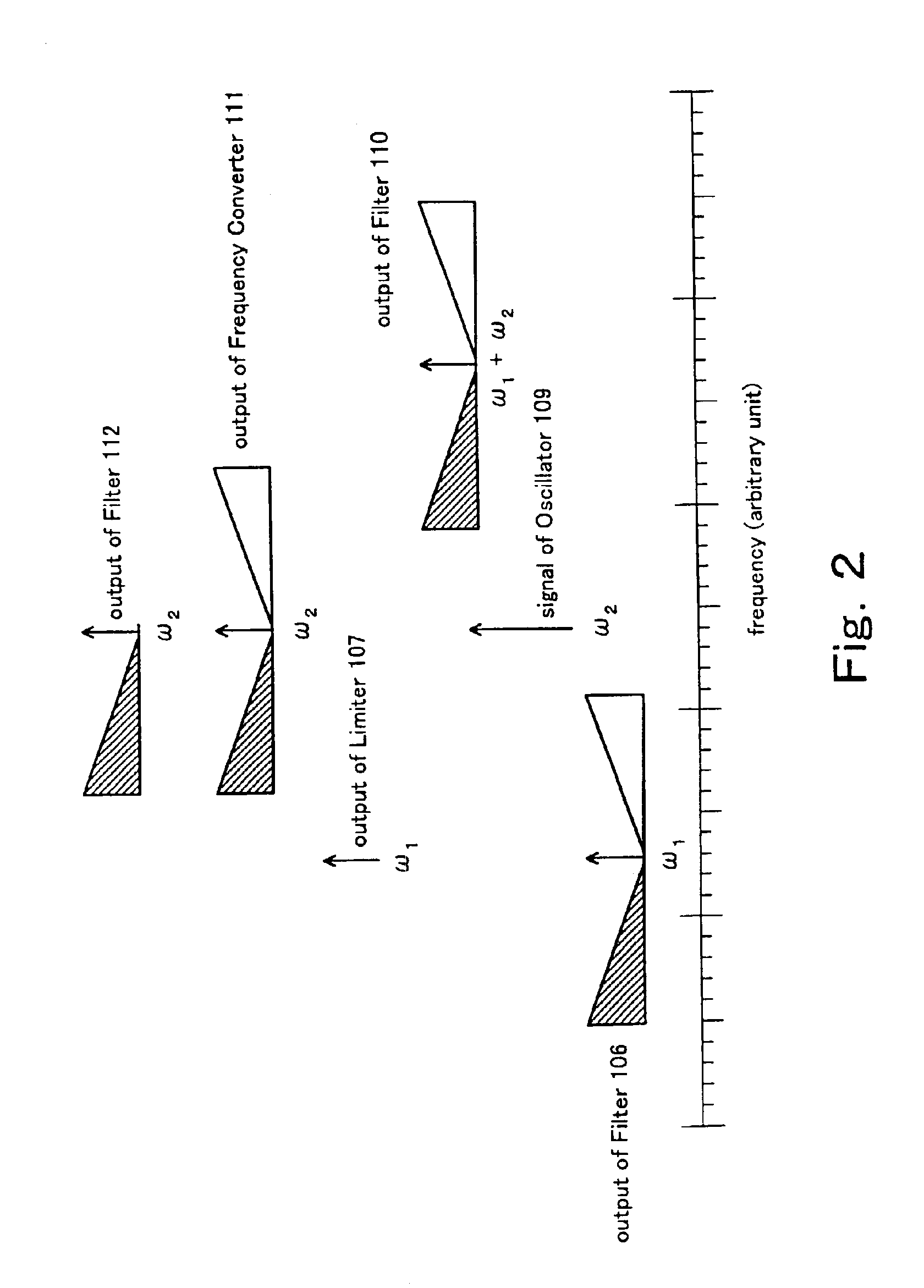Amplitude-modulated signal receiving circuit
a technology of amplitude modulation and receiving circuit, which is applied in the direction of amplitude demodulation, amplitude demodulation details, instruments, etc., can solve the problems of poor quality of demodulated signals, difficult to obtain high-quality demodulated signals using conventional demodulation techniques, and inability to improve audio quality
- Summary
- Abstract
- Description
- Claims
- Application Information
AI Technical Summary
Benefits of technology
Problems solved by technology
Method used
Image
Examples
first embodiment
[0034]A first embodiment of the present invention will be described with reference to FIG. 1 and FIG. 2. FIG. 1 is a block diagram of this first embodiment. FIG. 2 shows an exemplary arrangement in the frequency domain of sidebands and carrier components during the frequency conversions taking place in the AM signal receiving circuit. The embodiment depicted in FIG. 1 comprises AM transmitter 100, transmitting antenna 101, receiving antenna 102 of the AM receiver, front-end amplifier 103, frequency converter 104, local oscillator 105, intermediate frequency (IF) filter 106, amplitude limiter (hard limiter) 107, frequency converter 108, local oscillator 109, IF filter 110, frequency converter 111, IF filter 112, RZ SSB demodulation processor 113, and AM demodulated signal output terminal 114.
[0035]A brief description will now be given of signal flow in this first embodiment shown in FIG. 1, and of the functioning of its component circuits.
[0036]The output of AM transmitter 100 is tra...
second embodiment
[0047]A second embodiment of this invention will now be described with reference to FIG. 5 and FIG. 6. FIG. 5 is a block diagram of this second embodiment, while FIG. 6 shows an exemplary arrangement in the frequency domain of sidebands and carrier components during the frequency conversions taking place in the AM signal receiving circuit of FIG. 5. This second embodiment depicted in FIG. 5 comprises AM transmitter 200, transmitting antenna 201, receiving antenna 202 of the AM receiver, front-end amplifier 203, frequency converter 204, local oscillator 205, IF filter 206, amplitude limiter (hard limiter) 207, frequency converter 208, local oscillator 209, IF filter 210, frequency converter 211, IF filter 212, RZ SSB demodulation processor 213, and AM demodulated signal output terminal 214.
[0048]A brief description will now be given of signal flow in this second embodiment shown in FIG. 5, and of the functioning of its component circuits.
[0049]The output of AM transmitter 200 is tran...
third embodiment
[0057]A third embodiment of this invention will now be described with reference to FIG. 9 and FIG. 10. FIG. 9 is a block diagram of this third embodiment, while FIG. 10 shows an exemplary arrangement in the frequency domain of sidebands and carrier components during the frequency conversions taking place in the AM signal receiving circuit of FIG. 9. This third embodiment depicted in FIG. 9 comprises AM transmitter 300, transmitting antenna 301, receiving antenna 302 of the AM receiver, front-end amplifier 303, frequency converter 304, local oscillator 305, IF filter 306, amplitude limiter (hard limiter) 307, frequency converter 308, local oscillator 309, IF filter 310, IF filter 311, frequency converter 312, frequency converter 313, adder 314, IF filter 315, RZ SSB demodulation processor 316, and AM demodulated signal output terminal 317.
[0058]A brief description will now be given of signal flow in this third embodiment shown in FIG. 9, and of the functioning of its component circui...
PUM
 Login to View More
Login to View More Abstract
Description
Claims
Application Information
 Login to View More
Login to View More - R&D
- Intellectual Property
- Life Sciences
- Materials
- Tech Scout
- Unparalleled Data Quality
- Higher Quality Content
- 60% Fewer Hallucinations
Browse by: Latest US Patents, China's latest patents, Technical Efficacy Thesaurus, Application Domain, Technology Topic, Popular Technical Reports.
© 2025 PatSnap. All rights reserved.Legal|Privacy policy|Modern Slavery Act Transparency Statement|Sitemap|About US| Contact US: help@patsnap.com



